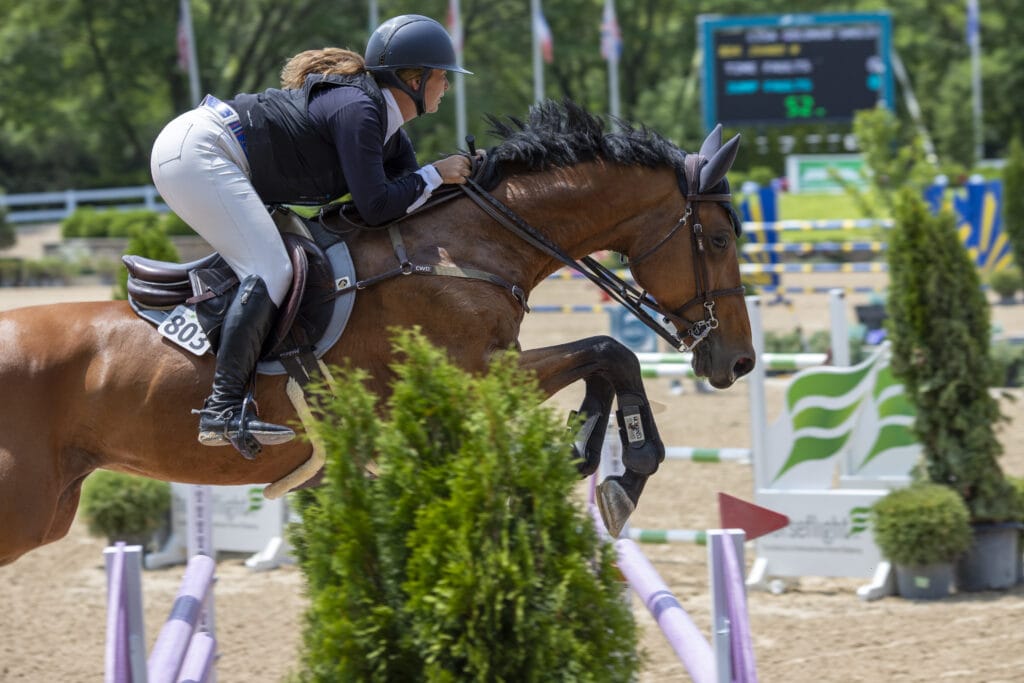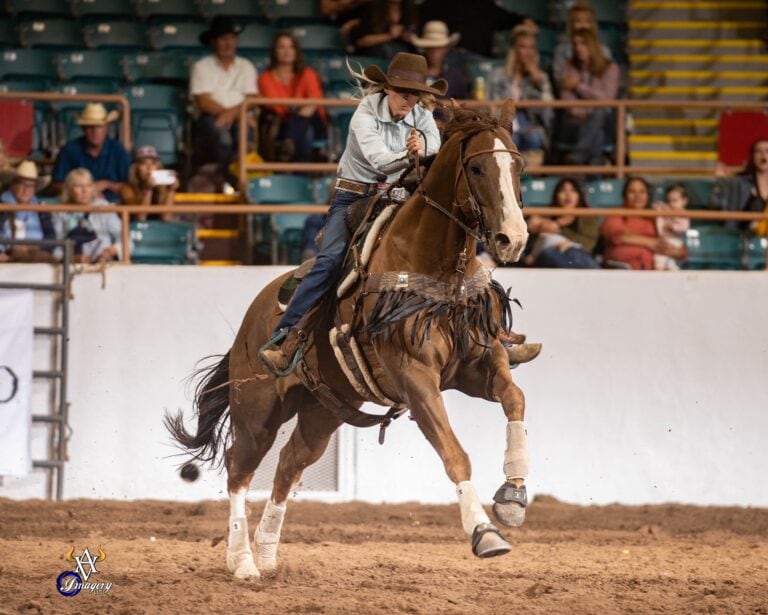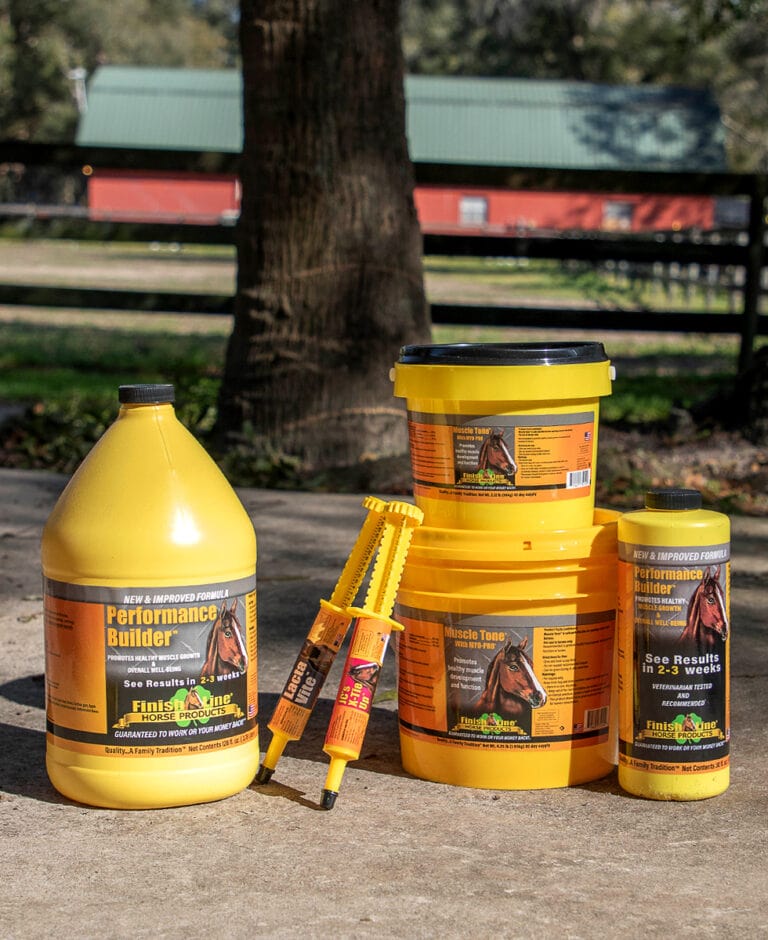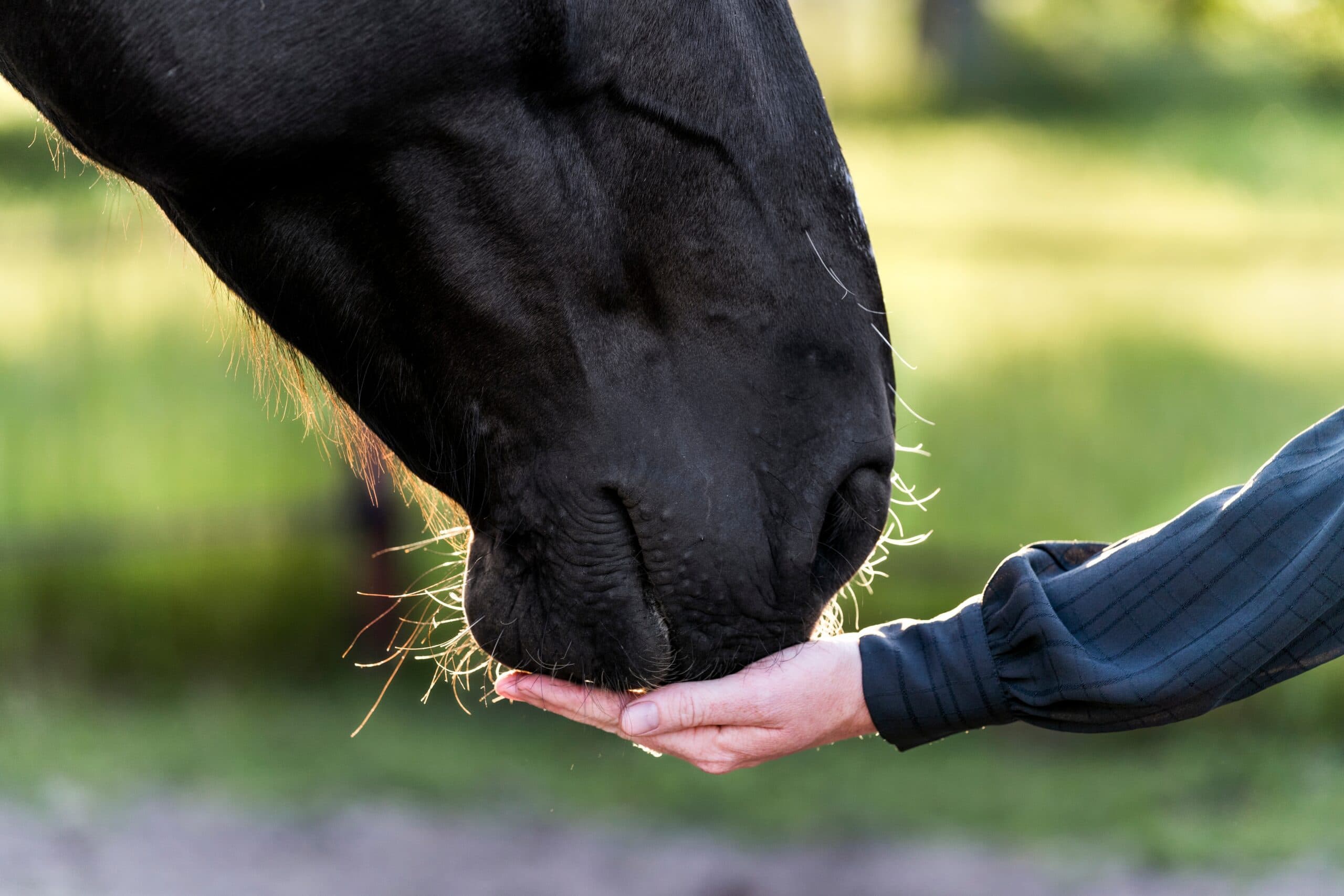4 Tips for Building Muscle for Your Horse
The bottom line is simple: The more training a horse gets, the stronger it will become, and the more receptive its body will be toward continued muscle-building. Here are some tips to keep in mind when building an optimized program:
1. Know Your Horse. Know its Muscle Type.
Different breeds are suited for different tasks and types of physical exertion. While it may seem obvious that a draft horse would be best for hauling at slower speeds with its sturdy build, and a long-legged, lean thoroughbred would be better for racing, knowing the why behind muscle build can help you tailor the best muscle-building regimen for your individual horse.
Draft horses, for example, have a higher muscular composition of Type 1 fibers that are fitting for their heavy pulling requirements. Thoroughbreds, on the other hand, have concentrations of Type 2 fibers that enable a high level of short-term exertion. But the distinctions are even more varied. Type 2 fiber is further broken down into Type 2A and Type 2B. The former are fibers called on to maintain high speeds and levels of activity; the latter are fibers for short, intense bursts of energy, yet they tire more quickly.
It’s important to realize these differences exist. This information should be used to adjust exercise regimens to fit the horse’s natural strengths. Conditioning a racehorse to increase speed in structured exercises can help it build up Type 2A fibers, while draft horses get the ideal toning in exercises that mirror their work tasks.
2. It’s All About the Topline Strength
Horses need strong muscles both for performance and to support their riders. That said, back and core strength may sometimes take a backseat to building up other sets of muscles that figure more directly into performance. Without attention paid to developing a strong back; however, trainers and owners both risk injury or chronic pain and disorders to the horse.
Carrying a rider adds further physical demands on the horse, as Equine Mechanics explains: “Muscular effort is needed to round the back and to stabilize… making it more able to carry the rider’s weight, to step under with the hind legs, and to transfer the push from the hind legs effectively. To achieve this, the horse needs a large amount of muscle tone. For example, abdominal and short back muscles are also particularly important for [stabilizing] the back to allow propulsion from the hindlegs for collected movements, flying changes, and jump take off. In dressage, horses’ pectoral muscles control the descent of the forelimb during extension – and can become overstretched and damaged if extension is not controlled.”
To prioritize back strength, trainers and owners should build stretches into their programs, as well as include other back-toning activities, like cavalettis and poles, core training and abdominal conditioning.
3. Building Your Horse’s Muscles Starts with Feed Time
Nutrition, and especially protein, play a foundational role in building muscle in horses. Amino acids, which make up proteins, are vital to different equine functions, particularly as they regard skeletal muscular function. Essential amino acids are processed by the body and used to build and repair muscle, which underscores the importance of protein content in diet.
However, it’s not a matter of loading protein in feed, as horses can make their own amino acids and may only need supplements targeting specific levels. Optimizing feed with high-quality natural sources of protein, like alfalfa hay, wheat middlings, and pasture grass will help your horse build healthy muscles too.
With various types ranging between 20 and 10 percent protein content, fresh grass may be better for muscle-building than grass hays. If more is needed, a concentrated feed supplement that doesn’t add too many calories to the diet is an ideal solution for replenishing amino acids.
4. Muscle-Building is Cyclical. Plan Accordingly
Muscle-building in horses is an intensive and cyclical process, so keeping that in mind can help trainers and owners optimize their muscle-building strategies.
Each time a horse exercises, muscle breakdown occurs. Physical exertion, on a molecular scale, inevitably results in strain on the muscle tissue, producing small tears. It’s the repair process that takes place afterward that heals the damaged tissue and builds new skeletal muscle.
Humans have a similar experience when feeling sore after a workout: that’s the body at work. Trainers and owners are reminded that pushing a horse in a linear fashion could work at cross-purposes with their fitness goals. Muscle-building takes time and careful management; overexertion easily leads to injury, which is a massive concern. A horse used to regular exercise or training that undergoes a sudden stop can lose muscle at a rapid rate, which further complicates efforts to build and sustain muscle mass.
The muscle-building cycle is also important to consider in training older horses. As an equine ages, the body’s ability to build new muscle is lessened, and what gains are made take more exertion and more time to generate. Aging horses are also more prone to injury, so extra care is advised to make sure that down cycles are as respected as training and exercise sessions. A balance and respect to the cyclical nature of your horse’s fitness can help minimize the liklihood of injury and help your horse recover faster if the are injured.









